With the V3 mono coming out to the broader public soon (and not just the presale buyers), I took the time to give an “ears only” review for this community of my pair. Be warned: it is personal, subjective, and shies away from too much technical discussion. I may even use the wrong terms here and there. But for those interested in technical measurements, I recommend consulting detailed reviews that provide objective data. I go into this review with no expectations of improvements to my sound system, after all we’re just talking about power being sent to a speaker, right? I tested these amps over several days and with plenty of music and media content. Read on to learn how these amps stomped all over my expectations and may have changed my audio upgrade path for the better.
**Unboxing Experience: **
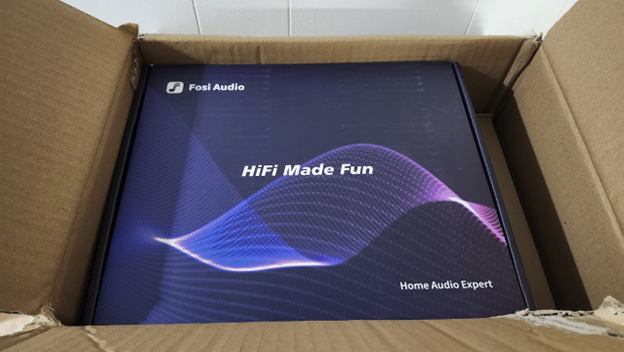
The unboxing experience was fine, I was surprised by the substantial weight of the box, it reminded me of a high-quality phono preamp. The packaging was generic, likely pre-retail, and was missing product details. Inside, the amplifiers were well-protected in foam, and the pair of 48V/10A power supplies were individually packed, ensuring no damage during transit. A tiny manual with basic information was included, but no other cables were provided.
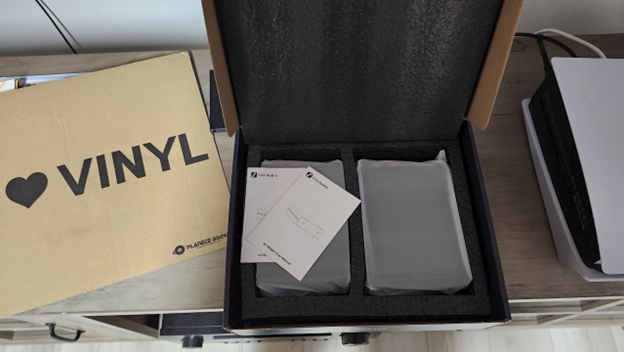
**Build Quality and Design: **
Upon first impression, the Fosi V3 monoblocks are compact, smaller than expected, similar in size to an Art DJ III phono preamp. Note the toggles on the front.

They are dense, not heavy but heavier than you would expect for their size. The separate power supply significantly reduces the desktop/rack footprint, allowing for a cleaner display of the neat little amplifiers, just tuck those power bricks away behind something.

The color scheme fits well with other black equipment like Denon and Sony, with a touch of orange in the vents adding a unique flavor. The toggles on the front make for easy switching between inputs (RCA and XLR) and to turn the amps off quickly. On the rear, there is plenty of space for the inputs without having them bump into each other or crowd each other out, an issue I’ve run into on some smaller devices.
**Specifications and Features: **
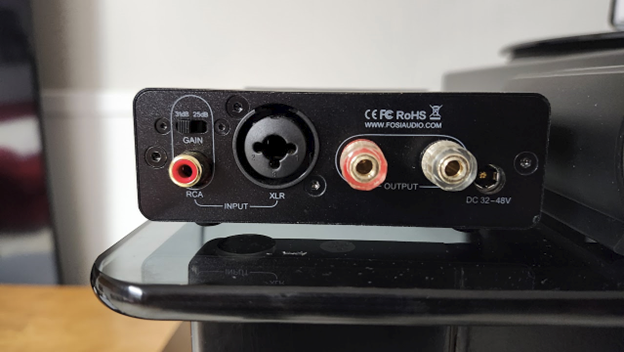
Channel : 1.0
Amplifier Chip : Texas Instruments TPA3255
Input : RCA, XLR, ¼" TRS
Output : Speaker Output (supports banana plug or bare wire connection)
SINAD : XLR: 101dB ; RCA: 93dB
SNR : ≥123dB
Dynamic Range : ≥123dB
THD : <0.006%
Gain : XLR/¼” TRS: 20dB ; RCA: 25dB, 31dB;
Terminal Impedance : 2-8Ω
Rated Power Output : 48V/5A–240W@4Ω ; 32V/5A --100W@4Ω
Frequency Response : 10Hz-30kHz(±0.06dB)
Input Voltage Range : DC 32-48V
Standard PSU : 48V/5A
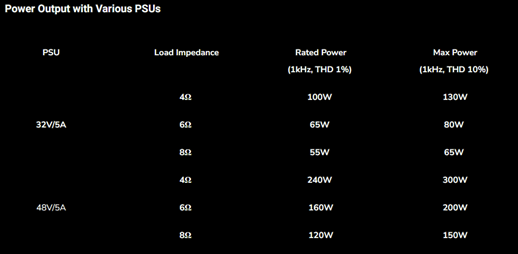
Not shown in the provided specs the swappable OP-AMP (a part you can swap out to change how audio is processed) offers flexibility for future flavor changes. Also, there is a selectable gain on the back of 25 and 32db, preset to 32db, with most of my testing conducted at 25db. Optionally, there is a 48V/10A PSU available that can be split to power two amps at a time. The v3 Mono features auto-standby mode, which kicks in after 10 minutes to save you a bit of power. Source: https://fosiaudio.com/pages/monoblock-power-amplifier-v3-mono **Setup and Installation: **
Setup was straightforward. The amps connected via RCA to my DAC, and the speakers plugged in using banana cables. The provided power supply cables are quite long which made for easy placement. I used two audio chains for my testing: The digital chain for testing: Qobuz/Plex -> Nvidia Shield TV Pro -> Topping D30 -> Fosi V3 Mono -> Mordaunt Short MS300. The analog chain for testing is the: Denon 400 turntable -> Art DJ III Phono Pre -> Fosi V3 Mono -> MS300. Comparisons are made against a Denon AVR S570BT (Retail $399 USD), which is my daily AMP.
Performance:
I ran the Bunker Analog Stereo test suite to start, as I do with all my new equipment and this evaluation was surprising as I did not expect much change. Five-point separation tests showed a wide soundstage and a dynamic range of -72 db, which was an improvement of -12db vs my AVR. Signal sweeps confirmed clear frequency separation, but especially in the low frequency range 40-80hz, making the bass more differentiated and eliminating muddiness I had come to expect from my stack, turns out the mud wasn’t my MS300 speakers, it was my amps! In the high frequency range, I confirmed that my hearing stops at around 16kHz, but my young daughter assures me that higher frequencies are being produced even if my old ears can’t hear them. At and below 16kHz, everything sounded like it should. This clear separation of frequencies and lack of audible distortion in test tones is a good omen and turns out to be a preview of good things to come.
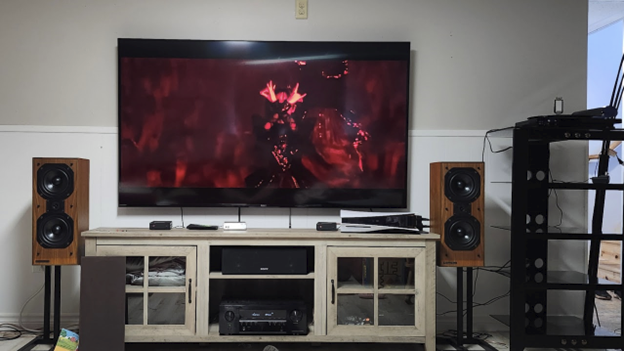
*Can you spot the Fosi Amps? Their footprint is tiny. *
For my first tracks I listened to Babymetal, I love this band and they’re a recent obsession of mine combining Jpop and metal in a way that you didn’t know you needed in your life. I had a session with their live album, “Babymetal Returns: The Other One” as I have been listening to this album a lot lately and know it well. Expecting nothing new, I was surprised immediately at the difference revealed in the live track “Doki Doki Morning,” as I could no longer hear the distortion in the higher frequencies and sustained vocals. This is an issue I was hearing across all my audio equipment, to the point I wrongly believed it was a problem with the recording. Turns out, again it was my AVR! It’s like my session went from listening to a live recording to having a live experience, the sound profile changed that much here, the presentation just felt much more ‘live’ than it had previously. This is exciting!
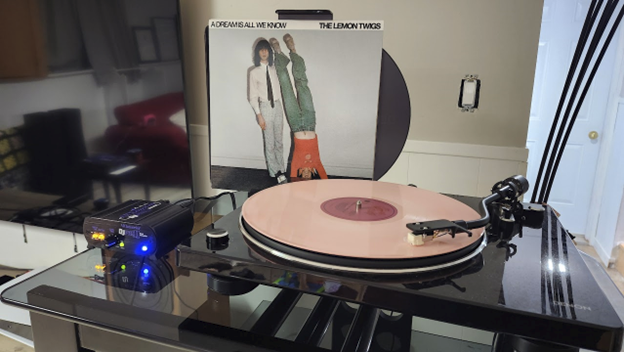
On the analog chain, the Lemon Twigs’ newest LP “A Dream is All We Know” showcased the amps’ ability to provide vocal detail and instrument separation. Tracks like “If You and I Are Not Wise” and “How Can I Love Her More?” sounded great with clear stereo separation, a wide soundstage, and differentiated low frequencies bringing the base playing to life.
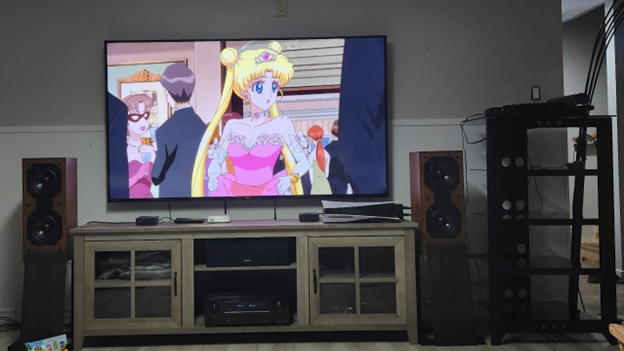
I also had the chance to test some TV content on the Nvidia Shield Pro, mostly while watching shows with my kids. Sailor Moon Crystal in flac stereo sounds great, with a wide soundstage differentiating the location of voices and clear voice reproduction. I swear, this stereo setup powered by the Fosi V3 Mono might be better for TV vocals and separation than the 5.1 system I disconnected.
Disadvantages
Let’s talk about disadvantages, or annoyances I found along the way. In my analogue stack there was nothing but the PreAmp Gain and the selectable gain on the Fosi V3 Mono to control volume levels. In an integrated amp or AVR you get more volume control. For those wanting more fine-tuned volume control in your analogue stack you will need a different preamp, maybe some other kind of controller like a Schiit Sys Passive Preamp. Note for digital users: I didn’t have this issue on the digital stack as the Nvidia Shield provided all the volume control I needed, I don’t know if a preamp would matter there.
Also worth mentioning, but not exactly the AMPs fault, the Auto Standby mode doesn’t kick in when connected to my analogue stack. The reason is obvious, my Art DJ III Phono Preamp has no power off switch and is always delivering at least a bit of signal as long as it is plugged in, this is all it takes for the v3 Mono to remain ‘on’ and a little bit warm. This is worth being aware of if your use case involves a component like the Art DJ III, you can either turn the v3 Mono off directly via the front toggle, or rig something up to disable your preamp to solve this problem. Another minor annoyance is that these AMPs are identical in rear configuration, good for modularity, but a little inconvenient for intuitive wiring. An optional left / right model (when purchased in a set) might make cable management for these a little more intuitive with right outputs to the right and left to left. Although I haven’t found a competing product that does this kind of thing. This is a minor concern, however, as once the amps are setup frequent rewiring is unlikely.
Lastly, the units I have do make a bit of an audible tick or pop when the unit comes on. This isn’t a big deal to me and my Denon AVR does it too, it lets me know they’re on, but it did startle me the first time it happened. Alternate Speaker test:
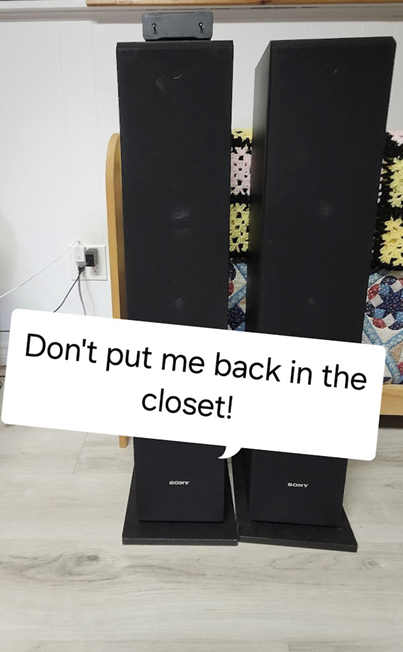
I was so impressed by the life breathed into my Mordaunt Short MS300 speakers by these Fosi Audio V3 mono amplifiers that I decided to unretire my Sony SSCS3 towers to see if these amps could redeem them. Sadly, there is no saving the SSCS3 speakers and they’re just as frustrating as ever. They produced noticeably more bass than previously, but it was all mud. One thing these amps have done for me is to let me hear the difference between good speakers like the MS300 and let’s say a less good speakers like the SSCS3. These AMPs won’t save poor speakers, but they will help your good speakers perform at their best!
Comparison with my AVR setup:
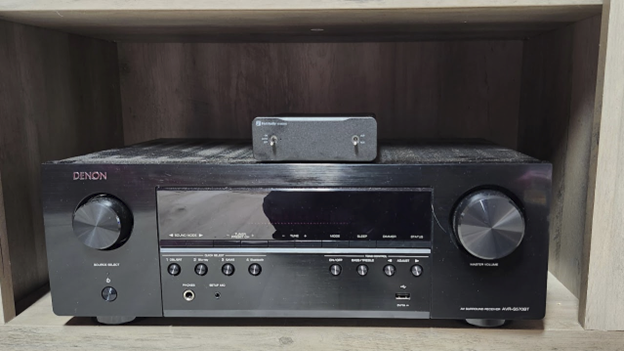 Just a bit of dust on the Denon. But look at that size difference.
Just a bit of dust on the Denon. But look at that size difference.
Like many people, my introduction to home theater and stereo is just getting an AVR based on the spec sheet, and looking for a bundle to match my TV with speakers that are well reviewed at a value. So, I come to this comparison from that background, my Denon AVR S570BT drives my home theater speakers, and I always thought it did a good job. Compared to my AVR and those like it, the Fosi V3 monoblocks excel in sound quality and detail. I don’t have the measurements to quantify this, but my ears aren’t lying and after 2 days of A/B tests, swapping speakers out, disabling EQ /using Pure Direct mode, I know I can hear a difference. From Babymetal to The Lemon Twigs, David Bowie to Neil Young, GA20 to Brittney Spencer, Sleigh Bells to Low Roar, every track and genre I threw at it sounded better on the Fosi V3 Mono amps than from my AVR. From a technology standpoint, it feels great to assemble a small footprint, quality stereo system from these Monoblock amps, an old Nvidia shield, an old DAC, and vintage speakers I got from a private sale ad for a song. When it comes to the modular design there are significant advantages versus all-in-one systems. The modular design allows for replacements, upgrades, and customization of your stack whether you are building for style, substance or both. These amps can fit into various configurations, from a simple stereo system to a high-end setup, providing versatility and quality at an excellent value. I can’t find anything comparable in value at the expected asking price.
Just consider the flexibility and upgrade paths on offer here, like a low-cost stereo system: Wiim Mini > DAC > Monoblock > Stereo Speakers
Or a value-oriented home theater chain: Denon X3800H > Monoblocks > 2/5/7/9 channels
Or even provide the power needed to your higher-end configuration like: Anthem STR Preamplifier> > Monoblocks (XLR) > Stereo Speakers
Yes, yes, I know I didn’t do measurements. I don’t have measurement equipment other than my ears! If measurements are your thing you’ll want to check out the review over at Audio Science Review that has all the measurements you could ever want.
**Final Thoughts: **
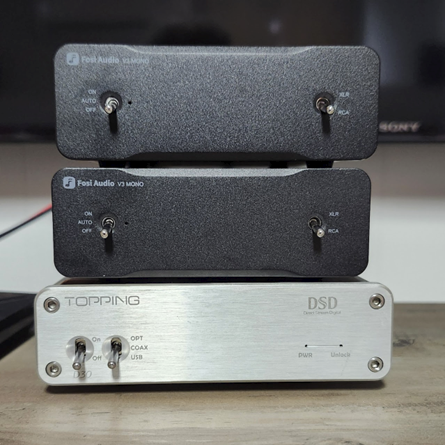
My overall experience with the Fosi V3 monoblocks was surprising, because I didn’t expect it to make any difference. Let’s sum it up though, easy setup, flexible configuration options, powerful performance, what’s not to like? After hours of listening, I can say with no doubt that these amplifiers outperformed my expectations and proved to be a significant upgrade over my home AVR. I’m convinced to pursue a separates system for future upgrades and recommend these to friends and family looking for high quality amplification at a fair price. At their expected asking price of below $260USD a pair, these monoblocks offer incredible value, with performance well above price comparable units. I highly recommend the Fosi V3 monoblocks for anyone interested in exploring separates, powering vintage speakers, adding passive speakers to your computer, or adding quality stereo amplification to any room with a minimal footprint and maximum flexibility. These amplifiers deliver exceptional performance and versatility, making them a worthwhile investment.

Dumb it down for me. What do these do, and where do they sit in the equipment chain?
These are single function devices, pure amps, all they do is amplify audio signals and provide power to passive speakers and nothing else.
So they are the last stop on the chain before speakers, you need equipment before them to handle everything else like processing, decoding, even volume control.
The advantage of these amps is that none of that other stuff gets in the way or interferes with the amp function, in theory (and to my ears) resulting in a better quality audio experience.